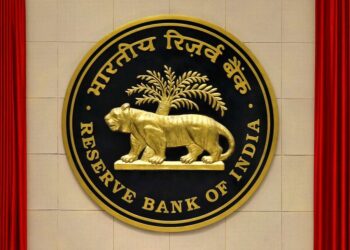The rise of digital payments and fintech has propelled India to the forefront of digital finance.
But while India’s digital payments market is predicted to grow from $3 trillion today to a staggering $10 trillion by 2026, the surprising truth is that physical brick-and-mortar banking remains an enduring reality.
Yes, that’s right. Nearly 65% of India’s population still resides in rural areas, and a large part of this population is yet to fully embrace the digital revolution happening across the country and the globe.
Why? Let’s find out.
India’s digital revolution
India’s transformation from a primarily cash-based economy to a digital powerhouse has been remarkable. The shift towards digital payments has been massive, with over 40% of all transactions today being conducted online. And this is expected to triple over the next three years. Fintech has been another crucial driver of this digital transformation. India’s fintech industry became the third most funded globally during the first half of 2023, trailing only the US and the UK.
India also has plans to introduce the digital rupee, which according to the Reserve Bank of India, will be an official currency interchangeable with fiat or physical currency. Punjab National Bank’s foray into the Metaverse with a virtual branch is another example of the country’s progress towards a digital future.
But while these developments have taken place, the reality is that banking here in India is still primarily based on brick-and-mortar branches. Why do we say this? Well, because despite the general sentiment that banking is moving to digital, some of the country’s biggest banks are adding physical branches at a rapid pace. Take a look at this stat – HDFC has increased its physical branch network by over 40% and plans to double the number in three years. ICICI meanwhile added close to 500 branches last year.
Woah! So what’s this counter-narrative that we are talking about?
The trust factor
Trust is a cornerstone of banking and is closely connected with physical interaction.
While digital innovations have made many banking processes more efficient, the human touch remains irreplaceable in building trust and addressing concerns. This is particularly true in rural and semi-urban areas where digital banking’s reach has been growing at a slower pace. Customers in these areas often find face-to-face interactions more comfortable to build understanding and reliability.
A recent study revealed that 70% of Indians still prefer physical bank branches when trying to resolve issues. In the same survey, 78% said they would rather have a physical bank branch in their neighbourhood than a digital one.
Balancing the gaps between the physical and digital banking landscape
The ongoing transition from physical to digital banking is far from simple. While the government envisions digital banking as the future, there is a long way to go until that becomes reality.
Digital banking is expected to increase financial inclusion in the country by providing easier access to banking services. But till its penetration increases, banking could take the hybrid route. Hybrid banking acts as a link between physical and digital, meeting the unique needs of both rural and urban areas and fostering a more inclusive financial landscape. It could provide rural customers with face-to-face support through a physical presence and urban customers with the convenience of digital services.
An example of this hybrid approach includes digital banking units or DBUs. DBUs deliver digital banking services in both self-service and assisted modes. They provide access to banking services cost-effectively and efficiently, with most services available 24×7 all year round. Last year, the government inaugurated 75 DBUs to simplify various banking services – from sending money to taking loans. This might help banks navigate this transitional hybrid phase by servicing rural areas, where digital banking is still gaining ground, and urban areas, where it is more prevalent.
Conclusion
Between its digital aspirations and physical reality, the Indian banking sector is at a pivotal juncture. The digital revolution has undoubtedly altered banking services in the country today but has not yet eliminated the dominance of brick-and-mortar branches. As India’s banks try to bring the digital and physical together, hybrid banking could act as a bridge and ensure that no one is left behind on the journey towards a digital future.








